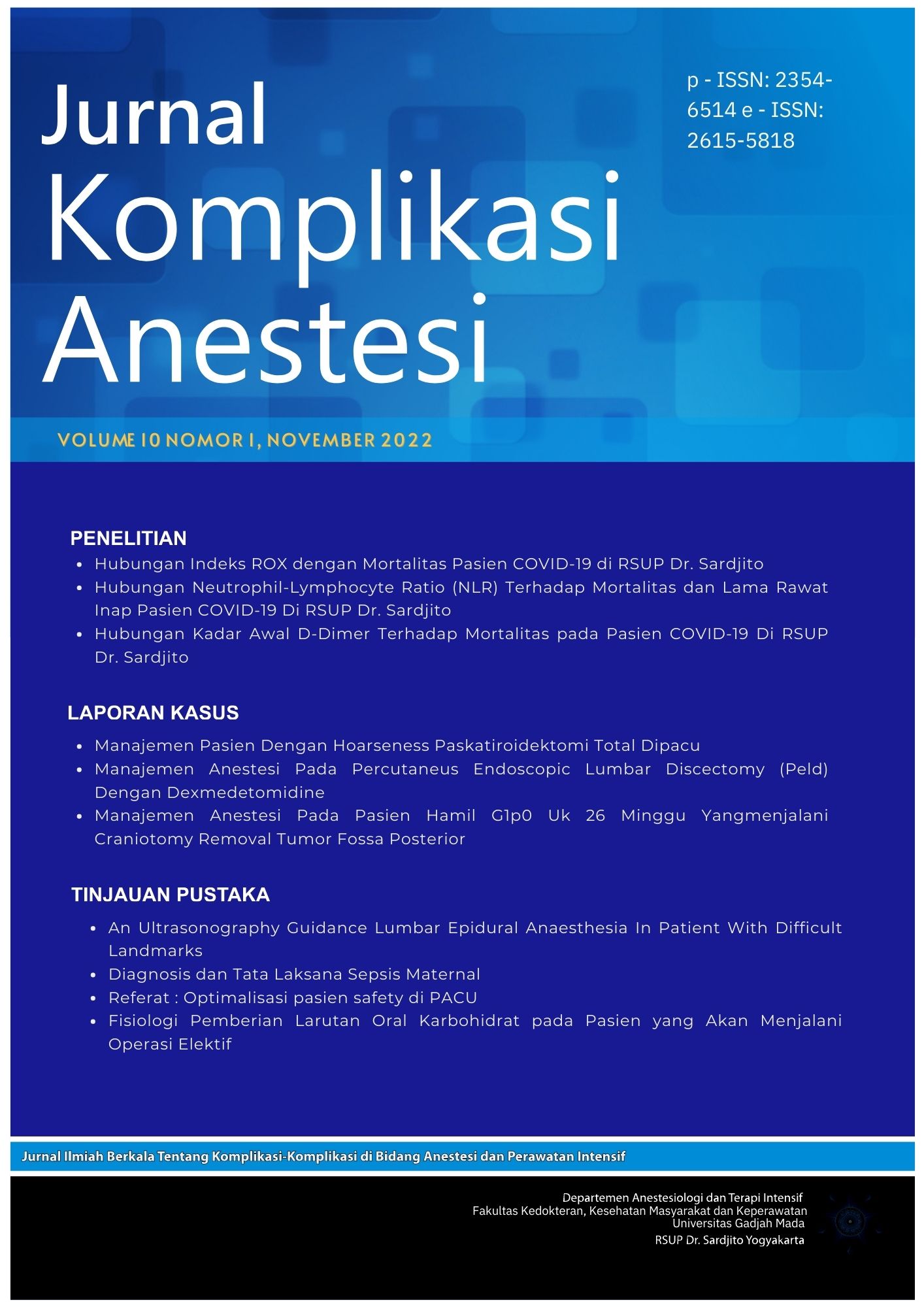Hubungan Kadar Awal D-Dimer Terhadap Mortalitas pada Pasien COVID-19 Di RSUP Dr. Sardjito
Abstract
In severe COVID-19 infection, the immune response can be exaggerated and
cause a systemic cytokine storm that triggers systemic inflammatory response
syndrome (SIRS). Excessive systemic inflammatory response can lead to systemic
endothelial injury (endotheliopathy) and a hypercoagulable state that increases
the risk of systemic macrothrombosis and microthrombosis. D-dimers are
released when plasmin, a fibrinolytic enzyme, breaks down fibrin and is a
reflection of the endovascular thrombosis process. Assessment of circulating Ddimer concentrations is a sensitive test for diagnosing thrombotic status
(including pulmonary embolism and DIC) and predicting mortality event in
patient contracted with COVID- 19
Copyright (c) 2022 Adam Alqustar, Juni Kurniawaty, Yunita Widyastuti

This work is licensed under a Creative Commons Attribution-NonCommercial-ShareAlike 4.0 International License.
The Contributor and the company/institution agree that all copies of the Final Published
Version or any part thereof distributed or posted by them in print or electronic format as permitted herein will include the notice of copyright as stipulated in the Journal and a full citation to the Journal.

















